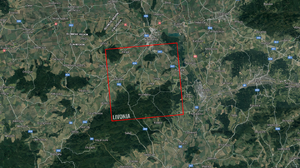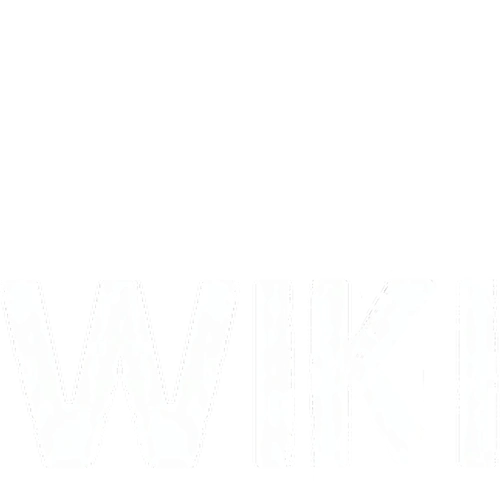Note: This page covers the country of Livonia - for information regarding the Livonia DLC, see DayZ Livonia; for information regarding the Enoch (Livonia) terrain, see Topolin-Nadbór Region.
Livonia, also known as Inflanty in Polish, is a fictional landlocked country located in the Baltic region of Eastern Europe where Polish is the official language. It shares borders with Kaliningrad Oblast in Russia to the west, Lithuania to the north, Belarus to the southeast, and Poland to the southwest. The country is divided into three sub-divisions, with the Andrzejów division being home to the capital city of Andrzejów as well as the abandoned Topolin-Nadbór region situated in the Biela Valley, which has been taken over by infected.
History[ | ]
This article may need cleanup to meet our quality standards - please help improve this article if you can. The Discussion page may contain suggestions.
Please help improve this article if you can. The Discussion page may contain suggestions.
This page needs additional citation. You can help DayZ Wiki by adding it. If the problems have been addressed, please edit this page and remove this notice. It will start with {{Citation needed and end with }}.
Livonia, also known as German Livland, is located on the eastern coast of the Baltic Sea, to the north of Lithuania. Originally, the name Livonia referred to the area inhabited by the Livs, a Finno-Ugric people whose settlements were centered on the mouths of the Western Dvina and Guaja rivers. Over time, the name came to encompass nearly all of modern-day Latvia and Estonia.[1]
Livonia was an area of economic and political expansion by mainly Danes and Germans at the start of the 12th century. The region hosted multiple crusades over the course of centuries until a Polish republic and a re-established democratic Lithuania were proclaimed in 1918. However, their independence celebrations were short-lived as World War II was looming. When the war began, Nazi Germany invaded Poland-Lithuania and turned their attention to the Soviet Union (USSR). After years of war, the Soviet Union pushed back the Germans, leading to a costly defeat. The Soviet Union then took control of the Poland-Lithuania Commonwealth and created a satellite state during the beginning of the Cold War.
Following the Soviet occupation of Livonia, Nadbór became a breeding ground for anti-Soviet resistance. Partisan activity continued for decades after World War II until it was quashed by the Soviets in the mid-1960s. Subsequently, the Poland-Lithuanian Commonwealth was free of Soviet control in 1989 and sought help in rebuilding their nation from the North Atlantic Treaty Organization (NATO). While the rebuilding of cities began, some of the war-torn towns were left to decay, resulting in masses of empty and decaying buildings being reclaimed by nature. These dilapidated structures were believed to have housed partisan groups back in the mid-1900s, as military clothing, weapons, and ammunition can be found throughout these buildings.
When the infection arrived, many cities were caught off guard, and the severity of the disease was underestimated by the government. However, Livonia was faring relatively well against the infection, and the destroyed cities and spaced towns helped slow its spread. Unfortunately, the limited military that was present went AWOL, leading to mass looting and civil unrest. The rest of the Livonian Defense Force was then tasked with fighting off the infected, but with only forest rangers left, little order was established.
Outbreak[ | ]
Like Chernarus, not much is known about the Infected outbreak in Livonia, but there are signs of the military before and during the Infected spread to Livonia. The Infected most likely approached from the south and migrated north due to Chernarus' location to Livonia. Since the towns are so rural, it can also be noted that the virus did not spread as fast. There is also a possibility that the virus spread through water or by train from Chernarus to Livonia sometime between 2018 and 2019. This timeframe is estimated because of the potential halt in economic growth from Soviet rule and the presence of the FX-45 in the loot tables in-game.
In many places, you can find remnants of resistance to infected and quarantine procedures conducted by the military and government.
Likewise, you can find the destroyed cities overgrown with vegetation and bunkers that had been used to fend off foreign attacks.
Post-Outbreak[ | ]
After the outbreak, the local military and civilian defenses were overwhelmed. The majority of inhabitants fled the area to a more supplied region that was able to sustain their needs. The Survivors who refused to flee either starved or were turned into Infected. With this lack of structure, Livonia fell into civil unrest, leading to banditry and lawlessness.
Geography[ | ]

Location that inspired Livonia in the Czech-Republic
Livonia is located south of the Baltic Sea and is in close quarters with the Carpathian Mountains. The area consists of condensed forests and rough terrain that hosts a multitude of lakes and the Biela River. The landscape is asperous and the forests are packed, lined with deep valleys and undulating hills. The fields are widespread; especially in the north, and vegetation is densest near river beds and around lake shores. Its forests and valleys host many rural villages and the ruins of Livonia's past. Livonia is home to hiking trails that you can follow to your destination, along with overgrown dirt roads that are taken back by nature. The north houses the majority of the general population and the region is sprawling with pop-up industrial areas.
Livonia features a lush of late summer with frequent rainfall and thunderstorms that are typical of a European country. Wildlife and nature coexist in this expansive land and is overlooked by landmarks that make this landscape unique.
There also exists within Livonia a castle; Branzów Castle.
Livonia is a region that overlaps the border between Lithuania and Poland and parts of the larger area stretches into Russias' Kaliningrad.
The forests are heavily populated by wildlife, including deer, wolves, and bears.
Politics and Economy[ | ]
Livonia operated under a parliamentary system with the office of the Prime Minister serving as head of state
Livonia is an industrial region filled with factories for the production of metal goods and a multitude of farms that are shipped in Cargo Containers (Military) and Cargo Containers (Civilian) throughout Europe. One such location to note is an unnamed large industrial area south-east of Nadbór and another east of Karlin.
Infrastructure[ | ]
The roads are mainly dirt, with some asphalt roads that will lead to major cities. Dams can also be found on small streams throughout the region. Factories can be located in major cities or by themselves on the outskirts of small towns. Livonia hosts three major railway stations which are located in Topolin, Grabin, and Borek.
Towns and Cities[ | ]
There are three major northern cities:
Major towns in the southern region of the map:
There are also many smaller towns, villages, hamlets, etc. scattered around Livonia. You can also find many man-made landmarks, amidst castles, a Prison, and destroyed villages.
Police and Military[ | ]
The Livonian Defense Force (LDF) serves as the region's primary land and air defense force. Forest rangers maintain law and order through the remote areas of Livonia where normal law enforcement patrols the populous areas. It can be noted that the police force maintained a key role in preventing the spread of the Infected, in comparison to the local military. In-depth articles can be listed by following below:
- Military Bases - Livonia
- Military Camps - Livonia
- Airfields - Livonia
Culture[ | ]
Language[ | ]
There are multiple different languages that are spoken in Livonia. The main languages being Polish and Lithuanian. But Russian, German, Czech, and other Slavic languages are spoken. One such language that went extinct was Livonian.
Religion[ | ]
The Catholic Church is the most prominent religion in Livonia, and many Livonia Churches can be found in major cities. Eastern Orthodox churches can also be found, but a small minority amount of people practice the religion.
Climate[ | ]
Livonia is a harsh, rainy environment with temperate climate conditions consisting of cold winters and cool summers.
Outside of the Topolin-Nadbór Region[ | ]
As mentioned above, the DayZ Livonia takes place in a small portion of Livonia - various maps and road signs hint at other locations beyond the confines of the Topolin-Nadbór Region:
Other Cities in Livonia[ | ]
- Andrzejów (Capital)
- Stokawsko
Bordering Nations[ | ]
- Russia (Kaliningrad Oblast)
- Belarus
- Lithuania
- Poland
Trivia[ | ]
- The Livonia map is ported from the spinoff ARMA 3 Contact DLC.
- The railroad always lies on the southside of the river unless you are northwest of Topolin.
- The current size of the nation of Livonia is unknown. The playable region, Topolin-Nadbór, is 163 km squared, according to the official steam page.
- A sign can be found in Polana that shows the distance to Andrzejów as "0".
- The real-life Livonia is a historical region on the eastern shores of the Baltic Sea.
References[ | ]








